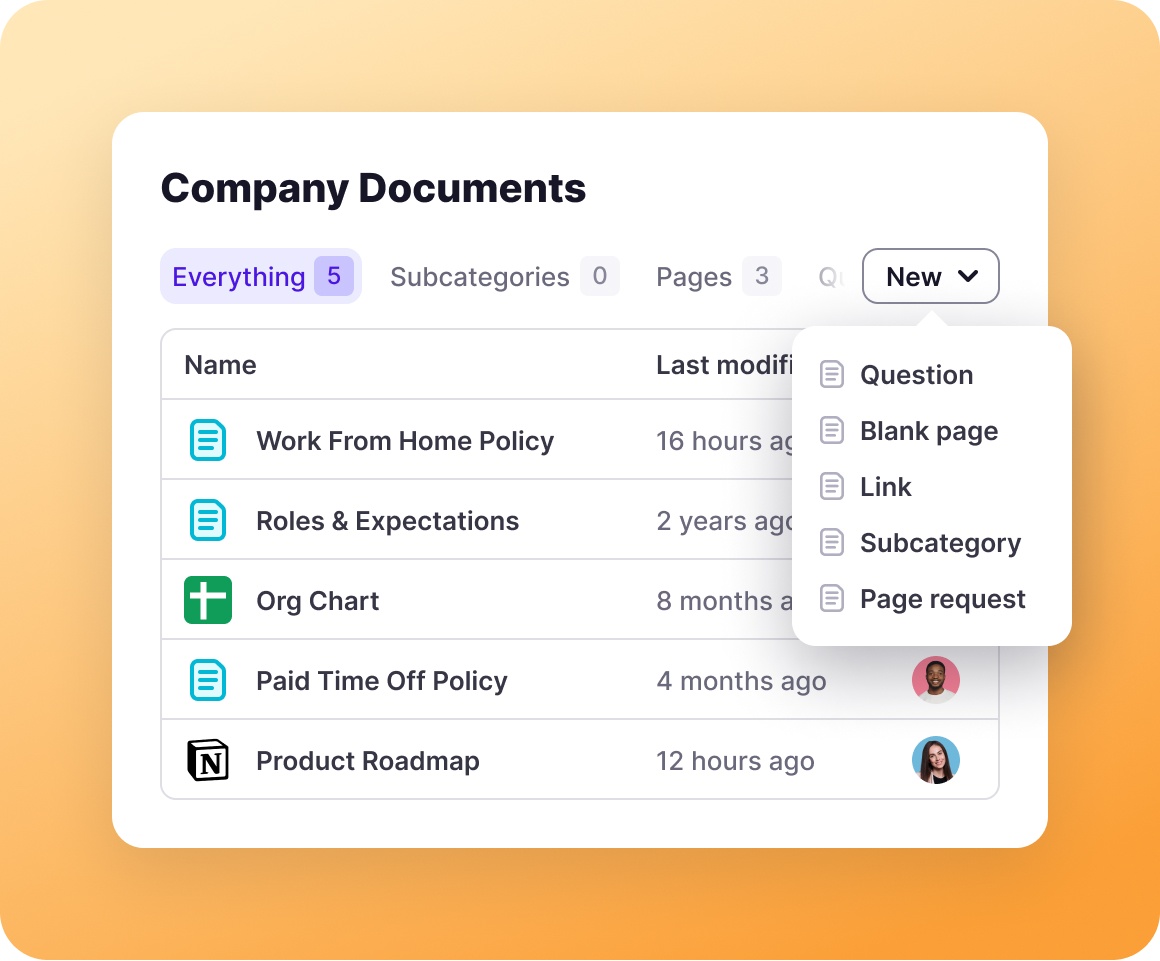Answer repetitive questions and
onboard new teammates faster
Tettra is an AI powered knowledge management system that helps you:
- Curate company information into an internal knowledge base
- Instantly answer your team's questions with AI in Slack or our app
- Save reusable answers and keep them up-to-date with automation
“Tettra has taken our shared knowledge to the next level. Honestly, I can’t imagine trying to replicate what we’ve done with Tettra in any other way.”

Jessica Vionas-Singer
Senior Director of Marketing at SmartBug

Create your knowledge base quickly with new or existing content
Create new internal documentation with Tettra's simple editor, or use existing content from Google Docs, Notion, local files, and more to build your knowledge base quickly.
More about our knowledge base
Instantly answer questions with AI trained on your knowledge
When a teammate asks a question in Tettra or Slack, Tettra's AI powered bot Kai will search through your content and provide an answer instantly. If Kai can't find an answer, it will help find the right person to answer.
More about our internal Q&A system

Trusted content your team can find and use
Missing or outdated information makes finding answers impossible. Knowledge automation helps subject matter experts regularly verify the accuracy of important pages, identify knowledge gaps, and approve suggested edits from teammates.
More about our knowledge management system
Teams of all types use Tettra to organize scattered knowledge
Dive deep on knowledge management
Start building your
knowledge base today
Fewer repetitive questions for you and faster answers for your team.
We guarantee you’ll be hooked.
Create your knowledge base










